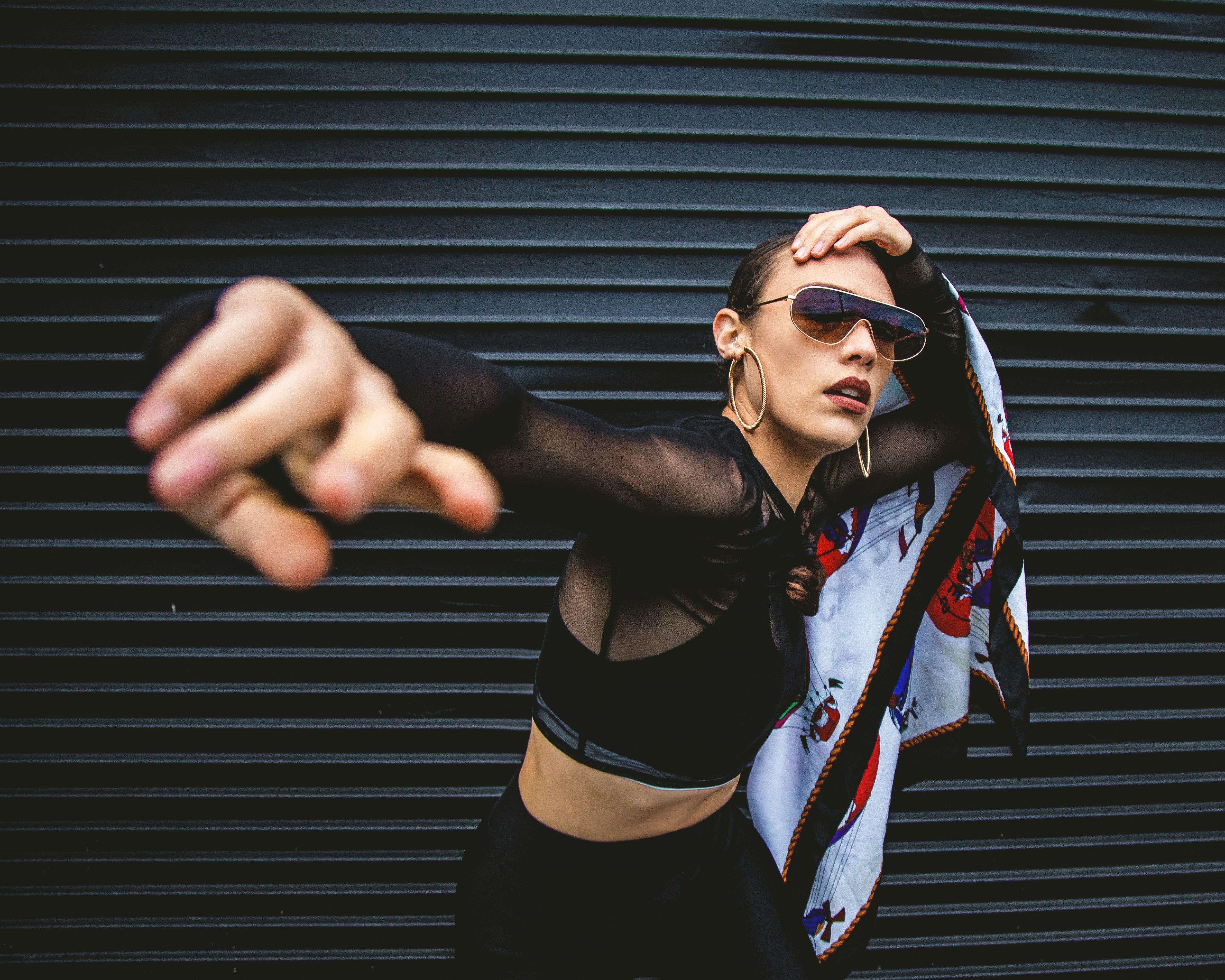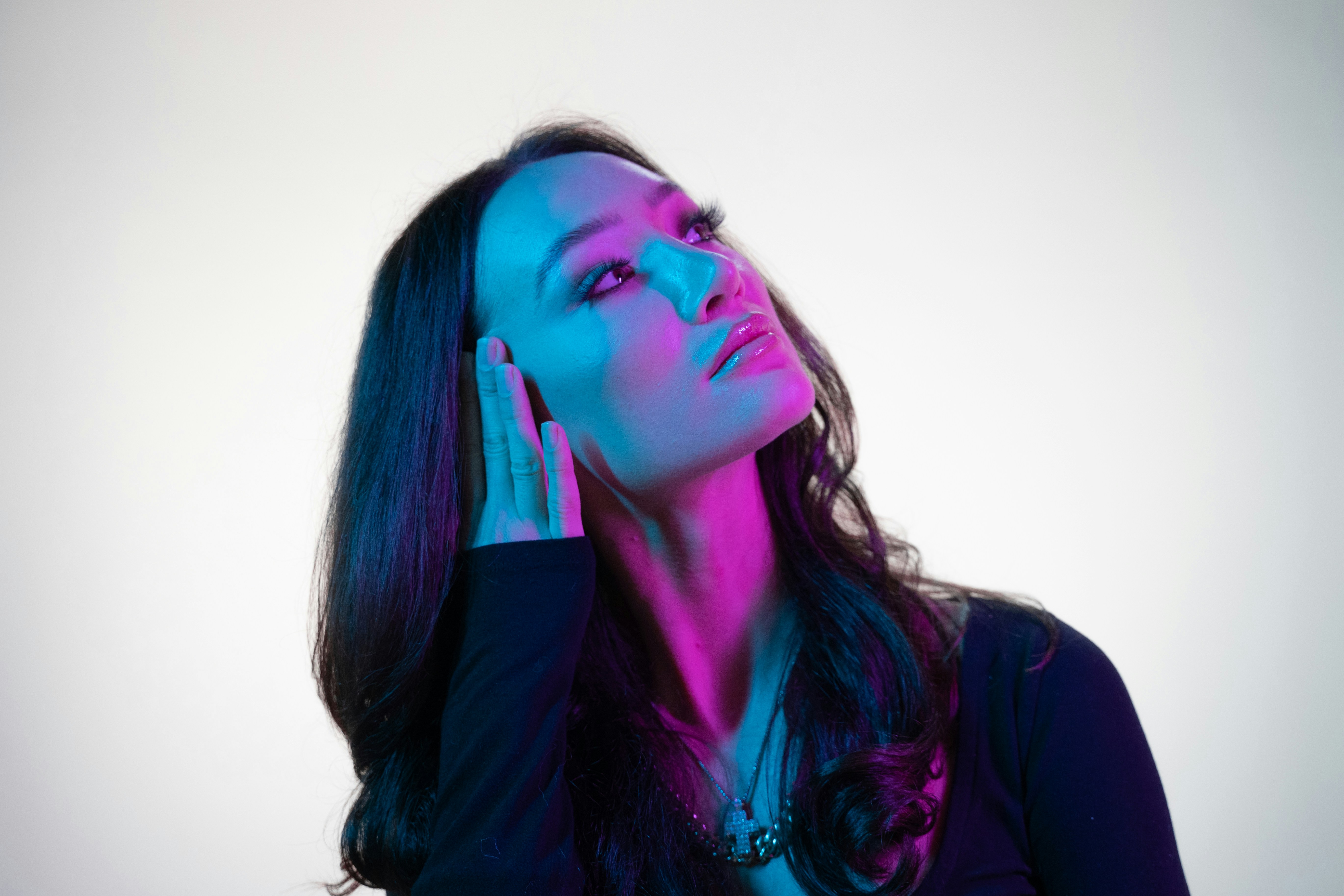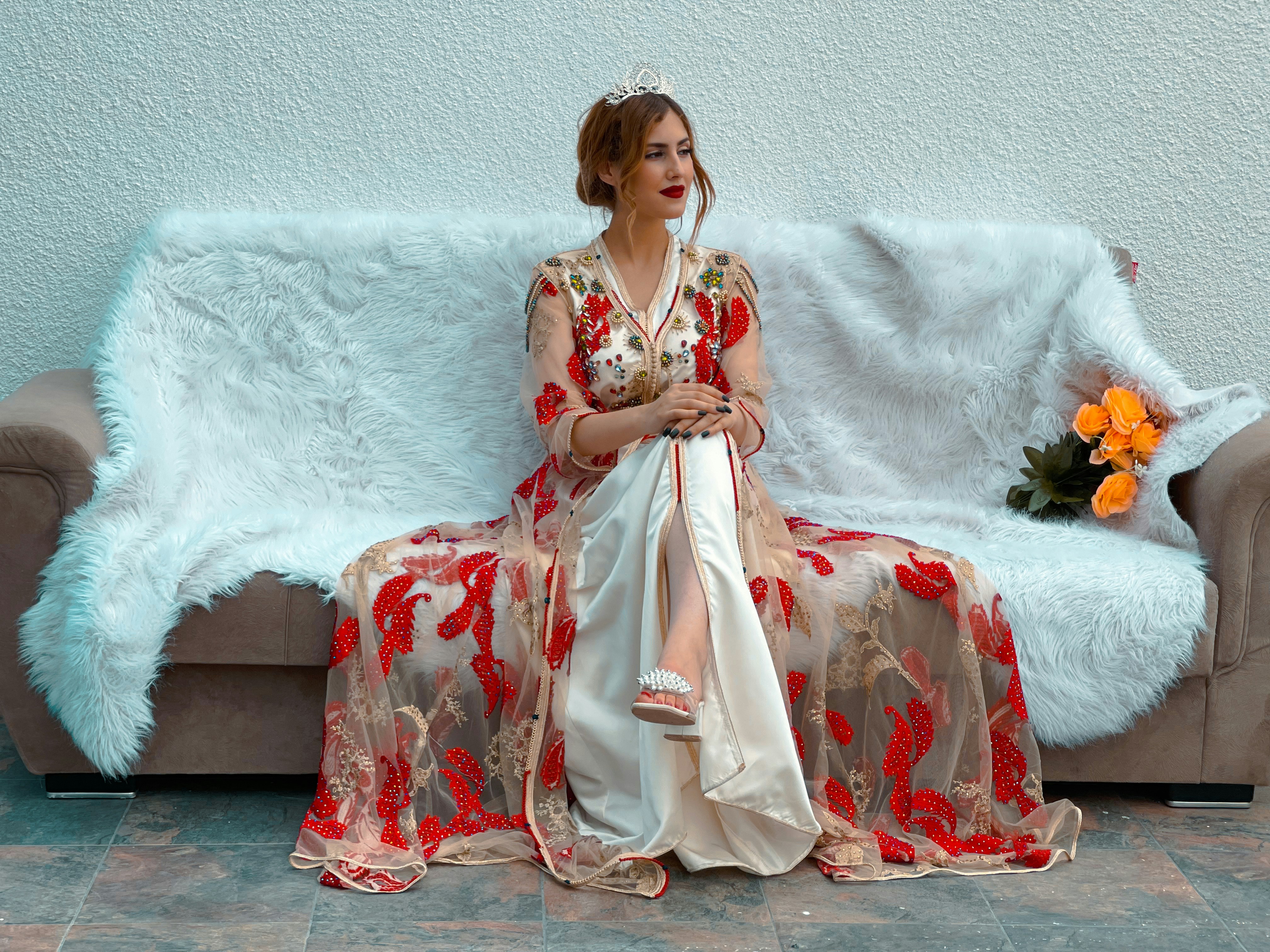How to Find Colors That Suit You According to Color Theory



Dante Kim
May 22nd, 2024
Get your color analysis done
in 60 seconds with WhatColors!
Get your color analysis done in
60 seconds with WhatColors!
Get your color analysis done in 60 seconds with WhatColors!
The colors we wear or surround ourselves with can impact our mood, confidence, and even how others perceive us. Discovering the right colors for your skin tone, lifestyle, and preferences can enhance your overall look and make you feel more at ease with your skin. In this blog, you will find advice on finding colors that suit you and helping you construct a wardrobe that perfectly complements your style and personality. Get ready to unlock a whole new world of stylish possibilities!
Table of Contents
What Are the Basics of Color Theory?

Color theory encompasses a multitude of definitions, concepts, and design applications—enough to fill several encyclopedias. Three basic categories of color theory are logical and useful:
Color wheel
context of how colors are used
One of the best tools for understanding color basics is the color wheel. It helps you see the relationships between individual colors so you can use them appropriately. The color wheel organizes pigment, which is used to produce color in illustration, art, and printing. It includes twelve colors based on Isaac Newton's visible color spectrum and is organized into primary, secondary, and tertiary/intermediate colors. Understanding these relationships is essential to using color in your designs.
Color Wheel
Primary Colors
Red, yellow, blue are referred to as primary because no other colors can be mixed to create them.
Secondary Colors
Green, orange, violet are formed from combining two primary colors.
Tertiary Colors
Red-orange, red-violet, yellow-green, yellow-orange are created when a primary and a secondary color are mixed.
Color Properties
Color has three primary qualities, known as properties: hue, value, and intensity. Each property affects the way we perceive color.
Hue
It refers to a color in its pure state and its position on the color wheel.
Value
Describes the degree of lightness or darkness in color. There are three ways to change the value of color: tinting lightens the color by adding white, toning soften a color by adding gray, and shading darkens a color by adding black.
Intensity
Is the brightness or dullness of a color based on saturation. Color is most intense in its purest form (hue). Intensity is low when a color is mixed with a complementary color or a neutral color.
Color Harmonies
Color harmonies are a way of using color to create visual interest. These color schemes combine to create a sense of order and organization.
Monochromatic
Uses different tones, shades, and tints of one color.
Analogous
Uses colors that are next to each other on the color wheel.
Complementary
Uses colors that are opposite each other on the wheel.
Split Complementary
Uses the colors on either side of the complement.
Triadic
Uses three equally spaced colors on the color wheel, forming a triangle.
Tetrad
Uses two complementary pairs, forming a rectangle on the wheel.
Color Temperature
Color has the power to evoke emotions. Color temperature describes the warmth or coolness of a color. Warm colors like red, yellow, and orange evoke energy and warmth because they are associated with things like the sun or fire. Cool colors like blue, green, and purple evoke a relaxed and calming feeling because they remind people of things like water or grass.
Related Reading
• How To Know What Colors Look Good On You
• What Color Lipstick Should I Wear
• What Colors Look Good On Pale Skin
• What Color Blush Should I Wear
• Colors That Go With Tan
• What Color Jewelry Should I Wear
9 Benefits of Wearing Colours That Suit You

1. Flatters Your Complexion
Understanding your unique color palette can help you curate a wardrobe that looks fabulous and boosts your self-confidence. Color analysis enables you to discover which hues complement your skin's undertones. Wearing the right shades can make your complexion appear even and give you a healthy glow, as if you've just returned from a tropical vacation.
2. Enhances Your Natural Features
The right colors can make your eyes pop and your hair shine. Imagine how mesmerizing your blue eyes can be when adorned in shades of turquoise or navy, or how auburn hair can radiate in earthy tones like rust and olive green.
3. Camouflage Imperfections
We all have those days when our skin isn't at its best. The right colors can help hide blemishes, redness, or dark circles. Who needs concealer when you have a fitting blouse?
4. Boosts Confidence
When you look good, you feel good. Wearing colors that harmonize with your natural coloring can boost your self-esteem, making you walk taller and more confident.
5. Effortless Coordination
When your wardrobe is centered around your season, you'll find mixing and matching outfits easier. Say goodbye to the "I have nothing to wear" dilemma!
6. Time-Saver
Choosing your outfit becomes a breeze when you know your colors. No more staring blankly at your closet, hoping for inspiration.
7. Consistency
Your outfits will have a cohesive look, making it easier to establish your personal style. People will notice your signature colors and remember your stunning style.
8. Save Money
Say goodbye to impulse buys. Knowing your colors means you won't waste money on clothes that don't suit you. Every piece you invest in will be a winner.
9. Versatile Wardrobe
Mixing and matching colors effectively can create a more versatile wardrobe. You'll be amazed at how different a garment can look when paired with various complementary shades.
Discover Your Perfect Palette with WhatColors
Unlock your colors and transform your style for free today with WhatColors’ AI Personal Color Analysis app. Download our app for free today on the App Store or Google Play store.
How to Find Colors That Suit You According to Color Theory

To determine your skin undertone, you can try a few methods. The first method is the vein check. Look at the veins on your wrist in natural light. If your veins appear blue, you likely have a cool undertone. If your veins look green, you likely have a warm undertone. If you can't really tell if your veins are blue or green, you might have a neutral undertone.
Cool vs. Warm: The Jewelry Test for Undertone
Another method to determine your undertone is the jewelry test. If you look better in silver jewelry, you likely have a cool undertone. If gold jewelry is more flattering, you likely have a warm undertone. Those with a neutral undertone can rock both silver and gold jewelry.
Fabric Draping
Draping fabric around your face is another method for identifying your undertone. Hold up a piece of silver fabric to one side of your face and a piece of gold fabric to the other side. Whichever one makes your skin look brighter and healthier is likely your undertone. If you notice minimal difference between the two, you could have a neutral undertone.
How Value Impacts Your Color Palette
Value refers to the relative lightness or darkness of a color. To find the colors that best suit you, you must consider the value of your skin tone, hair, and eyes. You will look great in deep colors if your skin, hair, and eyes are medium to dark. Lighter shades will complement you best if your hair and eyes are medium to light. Those with a mix of dark and light features are versatile and can experiment with colors of varying values.
The Impact of Intensity on Your Color Choices
Integrating intensity into your color choices is crucial. Chroma, or the intensity of your coloring, ranges from muted and soft to bright and clear. To look your best, ensure your chosen colors have a similar saturation level as your skin, hair, and eyes. Opt for bright colors with bright features and soft colors with muted features. Mismatching intensity can lead to unnatural looks.
Determining Your Contrast Level
Contrast is the relative variation in value among your features. You have high contrast if your hair and eye colors contrast starkly with your skin tone. Those with low contrast may look great in colors opposite to their overall coloring. For example, individuals with dark skin and cool undertones may look stunning in light, cool tones. Experiment with contrasting colors to see which ones enhance your unique features.
Style Considerations
Although color theory provides guidelines on color selection, personal style is paramount. You can reflect your style using the colors from your perfect palette. If you dislike certain colors, you don't have to wear them. Opt for shades that align with your undertone, value, intensity, and contrast while also suiting your preferences. Embrace your individuality and choose colors that make you feel confident and comfortable.
Related Reading
• What Color Should I Wear
• Best Colors For Olive Skin
• Colors For Cool Undertones
• Best Colors For Warm Undertones
• What Colors Look Good On Tan Skin
• What Colors Look Best On Brown Skin
• Best Colors For Cool Undertones
• Best Colors For Warm Skin Tone
• What Season Am I
• What Color Looks Best on Me
• What Is My Color
• How to Find Your Color Palette
• What's My Color Palette
• What Color Season Am I
Which Color Looks Best On Your Skin Tone?

Best Reds for Warm Undertones: Embrace Warm Hues
If your skin has warm undertones, colors like brick, cherry, raspberry, and crimson are your best friends. These warm shades beautifully complement your skin tone and bring out your complexion's golden tones. So, add these fiery hues to your wardrobe, whether it's a bold top or an all-red outfit.
Best Reds for Cool Undertones: Stand Out with Cool Reds
For those with cool undertones, poppy, ruby, and scarlet are the shades you should be eyeing. Reds with orange and pink undertones will warm your complexion and elevate your style game. So, pick up these standout shades and watch your heads turn wherever you go.
Blue Magic for Warm Undertones: Embrace the Unexpected
Although blue is traditionally considered a cool color, shades within the spectrum still beautifully complement warm undertones. Hues like dark turquoise, teal blue, and robin’s egg blue—with a hint of yellow—can make you look and feel radiant. So, don't hesitate to include these shades in your closet for a touch of unexpected magic.
Blue Bliss for Cool Undertones: Dive into the World of Blue
For those with cool undertones, colors like sapphire, cobalt, and ice blue are your go-to shades. These hues will balance the natural rosiness in your skin and give you a polished look. And don't forget about pastels – powder blue sweaters can be a great addition to your wardrobe, adding a soft touch to your overall style.
Neutral Ground: Timeless Shades for Every Complexion
Neutrals are essential for every closet; luckily, shades within this versatile palette suit every complexion. Think of earthy hues like sand, sepia, caramel, and deep reds for warm undertones. These colors will enhance the peach or golden undertones in your skin. On the other hand, cooler neutrals like taupe, nude, blush, and dove gray are perfect for cool undertones. Opt for a blush sweater to enhance the pink glow of your skin or go all out with an all-taupe outfit for a chic look.
Try AI Personal Color Analysis For Free Today
Our innovative AI technology helps you determine the perfect colors for you based on your skin tone, eye, and hair color. By analyzing these factors, WhatColors can identify your season and recommend the ideal colors for your wardrobe. Say goodbye to colors that don't suit you and unlock your unique color palette today.
Find the Perfect Nail Colors for You
Not only can WhatColors help you find the best clothing colors for your complexion, but it can also assist you in choosing the perfect nail colors. Our Nail Color Generator will recommend nail polish shades that complement your skin tone and overall look. Elevate your style with the ideal nail colors for you.
Transform Your Style with WhatColors
With WhatColors, you can enhance your style effortlessly. By discovering the colors that suit you best, you can transform your wardrobe and achieve a more cohesive and flattering look. Unlock your colors today and see the difference it can make in your style and confidence.
Download the WhatColors app for free on the App Store or Google Play store.
Related Reading
• Best Colors for Winter Skin Tone
• Best Colors For Yellow Undertones
• What Color Prom Dress Should I Wear
• Best Clothing Colors For Pale Skin Male
• Best Colors For Light Skin
• Best Clothing Colors For Fair Skin
• What Color Eyeshadow Should I Wear
• Best Colors For Light Brown Skin
• What Does It Mean When A Color Washes You Out
• Best Colors For Medium Skin Tone
• What Color Eyeliner Should I Wear
• What Colors Look Good On Pale Skin With Pink Undertones
Get your color analysis done
in 60 seconds with WhatColors!
The colors we wear or surround ourselves with can impact our mood, confidence, and even how others perceive us. Discovering the right colors for your skin tone, lifestyle, and preferences can enhance your overall look and make you feel more at ease with your skin. In this blog, you will find advice on finding colors that suit you and helping you construct a wardrobe that perfectly complements your style and personality. Get ready to unlock a whole new world of stylish possibilities!
Table of Contents
What Are the Basics of Color Theory?

Color theory encompasses a multitude of definitions, concepts, and design applications—enough to fill several encyclopedias. Three basic categories of color theory are logical and useful:
Color wheel
context of how colors are used
One of the best tools for understanding color basics is the color wheel. It helps you see the relationships between individual colors so you can use them appropriately. The color wheel organizes pigment, which is used to produce color in illustration, art, and printing. It includes twelve colors based on Isaac Newton's visible color spectrum and is organized into primary, secondary, and tertiary/intermediate colors. Understanding these relationships is essential to using color in your designs.
Color Wheel
Primary Colors
Red, yellow, blue are referred to as primary because no other colors can be mixed to create them.
Secondary Colors
Green, orange, violet are formed from combining two primary colors.
Tertiary Colors
Red-orange, red-violet, yellow-green, yellow-orange are created when a primary and a secondary color are mixed.
Color Properties
Color has three primary qualities, known as properties: hue, value, and intensity. Each property affects the way we perceive color.
Hue
It refers to a color in its pure state and its position on the color wheel.
Value
Describes the degree of lightness or darkness in color. There are three ways to change the value of color: tinting lightens the color by adding white, toning soften a color by adding gray, and shading darkens a color by adding black.
Intensity
Is the brightness or dullness of a color based on saturation. Color is most intense in its purest form (hue). Intensity is low when a color is mixed with a complementary color or a neutral color.
Color Harmonies
Color harmonies are a way of using color to create visual interest. These color schemes combine to create a sense of order and organization.
Monochromatic
Uses different tones, shades, and tints of one color.
Analogous
Uses colors that are next to each other on the color wheel.
Complementary
Uses colors that are opposite each other on the wheel.
Split Complementary
Uses the colors on either side of the complement.
Triadic
Uses three equally spaced colors on the color wheel, forming a triangle.
Tetrad
Uses two complementary pairs, forming a rectangle on the wheel.
Color Temperature
Color has the power to evoke emotions. Color temperature describes the warmth or coolness of a color. Warm colors like red, yellow, and orange evoke energy and warmth because they are associated with things like the sun or fire. Cool colors like blue, green, and purple evoke a relaxed and calming feeling because they remind people of things like water or grass.
Related Reading
• How To Know What Colors Look Good On You
• What Color Lipstick Should I Wear
• What Colors Look Good On Pale Skin
• What Color Blush Should I Wear
• Colors That Go With Tan
• What Color Jewelry Should I Wear
9 Benefits of Wearing Colours That Suit You

1. Flatters Your Complexion
Understanding your unique color palette can help you curate a wardrobe that looks fabulous and boosts your self-confidence. Color analysis enables you to discover which hues complement your skin's undertones. Wearing the right shades can make your complexion appear even and give you a healthy glow, as if you've just returned from a tropical vacation.
2. Enhances Your Natural Features
The right colors can make your eyes pop and your hair shine. Imagine how mesmerizing your blue eyes can be when adorned in shades of turquoise or navy, or how auburn hair can radiate in earthy tones like rust and olive green.
3. Camouflage Imperfections
We all have those days when our skin isn't at its best. The right colors can help hide blemishes, redness, or dark circles. Who needs concealer when you have a fitting blouse?
4. Boosts Confidence
When you look good, you feel good. Wearing colors that harmonize with your natural coloring can boost your self-esteem, making you walk taller and more confident.
5. Effortless Coordination
When your wardrobe is centered around your season, you'll find mixing and matching outfits easier. Say goodbye to the "I have nothing to wear" dilemma!
6. Time-Saver
Choosing your outfit becomes a breeze when you know your colors. No more staring blankly at your closet, hoping for inspiration.
7. Consistency
Your outfits will have a cohesive look, making it easier to establish your personal style. People will notice your signature colors and remember your stunning style.
8. Save Money
Say goodbye to impulse buys. Knowing your colors means you won't waste money on clothes that don't suit you. Every piece you invest in will be a winner.
9. Versatile Wardrobe
Mixing and matching colors effectively can create a more versatile wardrobe. You'll be amazed at how different a garment can look when paired with various complementary shades.
Discover Your Perfect Palette with WhatColors
Unlock your colors and transform your style for free today with WhatColors’ AI Personal Color Analysis app. Download our app for free today on the App Store or Google Play store.
How to Find Colors That Suit You According to Color Theory

To determine your skin undertone, you can try a few methods. The first method is the vein check. Look at the veins on your wrist in natural light. If your veins appear blue, you likely have a cool undertone. If your veins look green, you likely have a warm undertone. If you can't really tell if your veins are blue or green, you might have a neutral undertone.
Cool vs. Warm: The Jewelry Test for Undertone
Another method to determine your undertone is the jewelry test. If you look better in silver jewelry, you likely have a cool undertone. If gold jewelry is more flattering, you likely have a warm undertone. Those with a neutral undertone can rock both silver and gold jewelry.
Fabric Draping
Draping fabric around your face is another method for identifying your undertone. Hold up a piece of silver fabric to one side of your face and a piece of gold fabric to the other side. Whichever one makes your skin look brighter and healthier is likely your undertone. If you notice minimal difference between the two, you could have a neutral undertone.
How Value Impacts Your Color Palette
Value refers to the relative lightness or darkness of a color. To find the colors that best suit you, you must consider the value of your skin tone, hair, and eyes. You will look great in deep colors if your skin, hair, and eyes are medium to dark. Lighter shades will complement you best if your hair and eyes are medium to light. Those with a mix of dark and light features are versatile and can experiment with colors of varying values.
The Impact of Intensity on Your Color Choices
Integrating intensity into your color choices is crucial. Chroma, or the intensity of your coloring, ranges from muted and soft to bright and clear. To look your best, ensure your chosen colors have a similar saturation level as your skin, hair, and eyes. Opt for bright colors with bright features and soft colors with muted features. Mismatching intensity can lead to unnatural looks.
Determining Your Contrast Level
Contrast is the relative variation in value among your features. You have high contrast if your hair and eye colors contrast starkly with your skin tone. Those with low contrast may look great in colors opposite to their overall coloring. For example, individuals with dark skin and cool undertones may look stunning in light, cool tones. Experiment with contrasting colors to see which ones enhance your unique features.
Style Considerations
Although color theory provides guidelines on color selection, personal style is paramount. You can reflect your style using the colors from your perfect palette. If you dislike certain colors, you don't have to wear them. Opt for shades that align with your undertone, value, intensity, and contrast while also suiting your preferences. Embrace your individuality and choose colors that make you feel confident and comfortable.
Related Reading
• What Color Should I Wear
• Best Colors For Olive Skin
• Colors For Cool Undertones
• Best Colors For Warm Undertones
• What Colors Look Good On Tan Skin
• What Colors Look Best On Brown Skin
• Best Colors For Cool Undertones
• Best Colors For Warm Skin Tone
• What Season Am I
• What Color Looks Best on Me
• What Is My Color
• How to Find Your Color Palette
• What's My Color Palette
• What Color Season Am I
Which Color Looks Best On Your Skin Tone?

Best Reds for Warm Undertones: Embrace Warm Hues
If your skin has warm undertones, colors like brick, cherry, raspberry, and crimson are your best friends. These warm shades beautifully complement your skin tone and bring out your complexion's golden tones. So, add these fiery hues to your wardrobe, whether it's a bold top or an all-red outfit.
Best Reds for Cool Undertones: Stand Out with Cool Reds
For those with cool undertones, poppy, ruby, and scarlet are the shades you should be eyeing. Reds with orange and pink undertones will warm your complexion and elevate your style game. So, pick up these standout shades and watch your heads turn wherever you go.
Blue Magic for Warm Undertones: Embrace the Unexpected
Although blue is traditionally considered a cool color, shades within the spectrum still beautifully complement warm undertones. Hues like dark turquoise, teal blue, and robin’s egg blue—with a hint of yellow—can make you look and feel radiant. So, don't hesitate to include these shades in your closet for a touch of unexpected magic.
Blue Bliss for Cool Undertones: Dive into the World of Blue
For those with cool undertones, colors like sapphire, cobalt, and ice blue are your go-to shades. These hues will balance the natural rosiness in your skin and give you a polished look. And don't forget about pastels – powder blue sweaters can be a great addition to your wardrobe, adding a soft touch to your overall style.
Neutral Ground: Timeless Shades for Every Complexion
Neutrals are essential for every closet; luckily, shades within this versatile palette suit every complexion. Think of earthy hues like sand, sepia, caramel, and deep reds for warm undertones. These colors will enhance the peach or golden undertones in your skin. On the other hand, cooler neutrals like taupe, nude, blush, and dove gray are perfect for cool undertones. Opt for a blush sweater to enhance the pink glow of your skin or go all out with an all-taupe outfit for a chic look.
Try AI Personal Color Analysis For Free Today
Our innovative AI technology helps you determine the perfect colors for you based on your skin tone, eye, and hair color. By analyzing these factors, WhatColors can identify your season and recommend the ideal colors for your wardrobe. Say goodbye to colors that don't suit you and unlock your unique color palette today.
Find the Perfect Nail Colors for You
Not only can WhatColors help you find the best clothing colors for your complexion, but it can also assist you in choosing the perfect nail colors. Our Nail Color Generator will recommend nail polish shades that complement your skin tone and overall look. Elevate your style with the ideal nail colors for you.
Transform Your Style with WhatColors
With WhatColors, you can enhance your style effortlessly. By discovering the colors that suit you best, you can transform your wardrobe and achieve a more cohesive and flattering look. Unlock your colors today and see the difference it can make in your style and confidence.
Download the WhatColors app for free on the App Store or Google Play store.
Related Reading
• Best Colors for Winter Skin Tone
• Best Colors For Yellow Undertones
• What Color Prom Dress Should I Wear
• Best Clothing Colors For Pale Skin Male
• Best Colors For Light Skin
• Best Clothing Colors For Fair Skin
• What Color Eyeshadow Should I Wear
• Best Colors For Light Brown Skin
• What Does It Mean When A Color Washes You Out
• Best Colors For Medium Skin Tone
• What Color Eyeliner Should I Wear
• What Colors Look Good On Pale Skin With Pink Undertones
